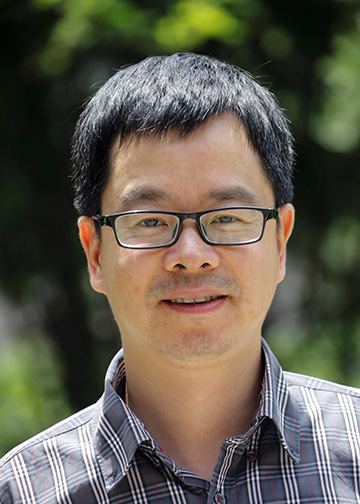
Ruxin Li. [Image: Courtesy of R. Li]
For its May 2020 print article “The Laser at 60,” OPN interviewed a range of OSA Fellows to get their insights on some particularly interesting horizons in laser research today. We’re presenting a selection of those interviews online. Below is an edited version of our email interview with Ruxin Li of the Shanghai Institute of Optics and Fine Mechanics, China. One of Li’s biggest projects today is the Station of Extreme Light (SEL) in Shanghai, currently under construction—and targeted, upon completion, to produce a laser with 100 petawatts (PW) of peak power.
Could you give us your personal thoughts on how far lasers have come in the last 60 years?
In the last 60 years, lasers have achieved great development, and almost all parameters have reached a very high level. Nowadays, lasers are widely used in many fields, including materials science, bio-imaging, communications, energy sciences, industrial processing, fundamental physics and so on.
What do you think are some of the most important and potentially productive questions in laser science and technology being addressed today—whether in your own field or in others?
In my opinion, it may be the increases in power—including peak power and average power, which significantly promote and expand applications of lasers. Further, compact and mobile and even space-based laser science and technology will be available in many practical applications.
I’d like to get a bit more information about the Station of Extreme Light (SEL) project, the large ultra-intense laser being built in China. Could you talk about the status of that project, and the ultimate technical specifications that you’re currently aiming for with this laser?
The SEL project was approved by the Chinese government in 2017 and kicked off in April 2018. At present, most of the engineering designs have been finished, and the front end of the facility, which can be regarded as a small prototype of the SEL facility, is being developed.
According to the existing schedule, the facility will be completed in 2025 and then open to users. In this project, a 100-PW laser facility will be developed, which can provide focused intensity of more than 1023 W/cm2. This laser will work with a hard X-ray for pump–probe experiments, such as experimentally verifying the vacuum birefringence phenomenon.
That facility rests, as I understand it, on optical parametric chirped-pulse amplification (OPCPA) as a key enabling technology. Could you talk a bit about why OPCPA is so important in creating these petawatt-scale lasers?
Compared to Ti:sapphire- or Nd:glass-based chirped-pulse amplification (CPA), OPCPA, based on existing larger-sized nonlinear crystals, can provide broader bandwidth, higher single-pass gain, and less thermal effect, which can support higher-energy amplification with shorter compressed pulse durations. Further, the OPCPA design—with the higher single-pass gain and related shorter optical distance in big 100-PW laser—is beneficial for coherent beam combination, and synchronization between the 100-PW laser and XFEL laser at femtosecond and micrometer accuracy levels.
In terms of applications for SEL, there’s a lot of talk about using these strong fields to break down and explore the quantum vacuum. What do you personally view as the most important and interesting applications of the ultra-intense lasers you’re pioneering?
Yes, vacuum QED is one of the most interesting applications for the SEL facility, and the collision of the 100-PW laser and XFEL beams to investigate the vacuum birefringence effect is the “day-one” experiment. Besides that, I think the generation of high-energy particles and radiation will be another very important application.
In addition to SEL, what other problems is your team working on that you find particularly interesting?
We also pay attention to new ultra-intense lasers, and new-wavelength lasers from the mid-infrared to the terahertz and extreme ultraviolet. We look at few-cycle pulse duration lasers and even attosecond lasers, high-rep-rate PW-class lasers with high average power, the manipulation of the optical field and so on. These can provide more comprehensive, high-efficiency driving sources for research.
